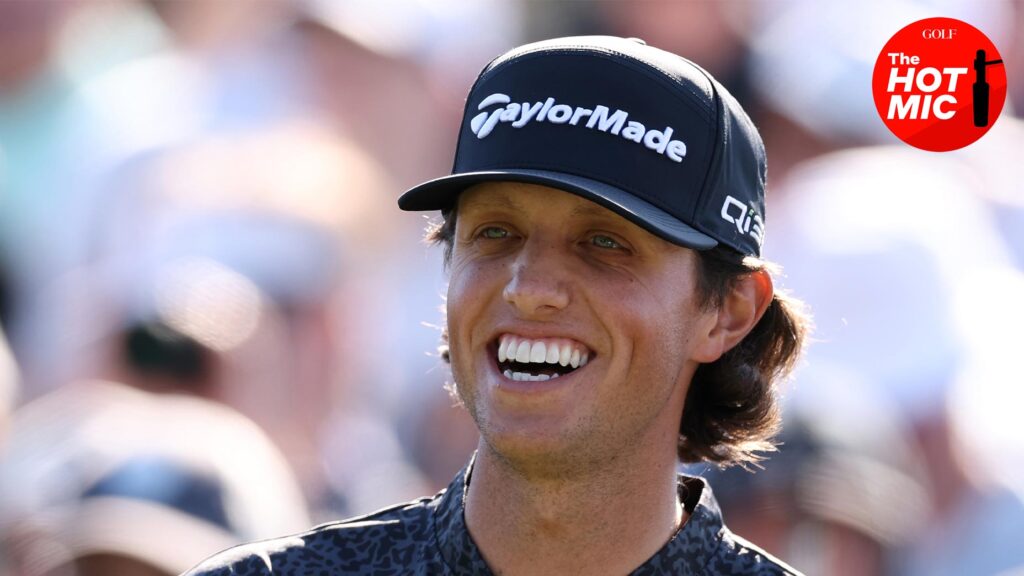Golf and Media: Analyzing Grant Horvat’s Controversial Refusal to Play in the PGA Tour’s Barracuda Championship
In recent news, golf YouTube sensation Grant Horvat made headlines by declining an invitation to partake in the PGA Tour’s prestigious Barracuda Championship. He cited restrictions imposed by the Tour, which explicitly forbade him from filming any content during the tournament. This decision raises significant questions about the relationship between emerging media creators and traditional sports organizations, particularly the PGA Tour.
Horvat’s refusal to participate can be traced back to the Tour’s stringent media regulations. According to the PGA Tour, only sanctioned media partners are permitted to capture video content during competition. This rule is not only an indicator of the Tour’s desire to maintain exclusivity but also plays a crucial role in protecting the overall value of its media rights. Without these protections, the economics underpinning the PGA Tour could face severe challenges.
A central tenet of the PGA Tour’s commercial strategy involves its lucrative media rights agreements valued at around $750 million annually. This staggering figure underscores the importance of maintaining strict control over who can produce and distribute content from tournament events. If the floodgates opened to allow non-sanctioned media daily access to the competition, the Tour’s appeal to high-paying television partners would erode. In an industry where exclusivity equates to revenue, the implications for the Tour are profound.
Yet, Horvat’s influence as a significant online content creator raises an intriguing dilemma. Could his participation enhance audience engagement and interest in tournament events, potentially translating into higher television ratings and greater sponsorship value? The PGA Tour may miss opportunities by not embracing the power of social media influencers. However, allowing one exceptional case for a creator like Horvat may open Pandora’s box, leading to widespread demands for similar treatment.
While some may argue that Horvat’s involvement could increase viewership, the PGA Tour’s obligation to its broadcast partners is paramount. Contracts exist for a reason, and deviating from established media guidelines could set a dangerous precedent that undermines the financial stability of the entire tour. The reality is that extensive media coverage from independent creators may lead viewers to opt-out of traditional broadcasts, questioning the logic behind subscribing to networks like NBC or CBS.
The PGA Tour has successfully stood its ground over the years by enforcing these media policies during competitive play. However, it has shown willingness to evolve regarding practice rounds and other non-competitive events. As the media landscape transforms—becoming increasingly digitized and diversified—there may be merit in revisiting the rigid boundaries surrounding content creation in golf.
NBC’s approach to golf telecasts exemplifies the evolution of sports broadcasting. Over the years, NBC has operated using a hybrid model that combines footage from the R&A’s World Feed and their own camera angles during the Open Championship. This approach significantly cuts costs but has sometimes resulted in a less authentic coverage experience since the unique NBC stamp was missing. Come 2025, however, NBC plans to invest further in their Open coverage, hoping to provide a fresher, more uniform product.
As sports media executives acknowledge the growing prevalence of content creators like Horvat, they must tread carefully. The goal is to harness their potential to connect with fans while insuring the interests of traditional media partners. At the heart of this balancing act lies the requirement for the PGA Tour to safeguard its lucrative rights while finding innovative ways to adapt to a rapidly changing environment.
Ultimately, the clash between established sports organizations and digital influencers epitomizes a broader trend affecting the global sports landscape. Balancing commercial interests with innovative content creation presents challenges, but it also opens avenues for growth and connection with new audiences. The PGA Tour’s choices regarding policy flexibility and media rights will shape its ongoing relationship with fans and content creators alike.
Both Grant Horvat and the PGA Tour represent two sides of an evolving sports media landscape. The outcome of this clash will not only impact the future interactions between golf and digital media creators but may also redefine the way golf is consumed in the years to come. As traditional broadcasting navigates a digital world where influencers play pivotal roles, the Tour’s response to these challenges will be vital for its sustained relevance.


